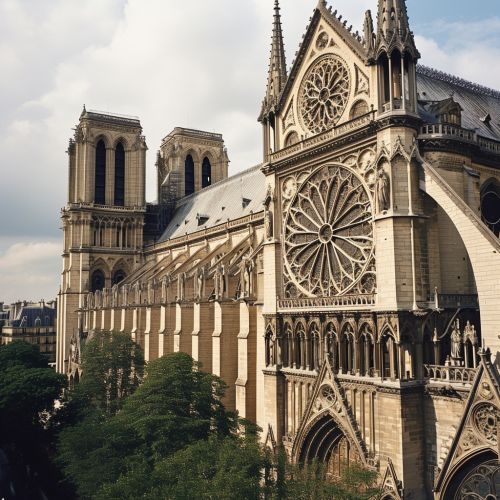List of architectural styles
Ancient Architectural Styles
The origins of architecture can be traced back to the dawn of civilization. The earliest known architectural styles emerged from the civilizations of the ancient world.
Egyptian Architecture
Egyptian architecture is one of the most iconic and enduring of all ancient architectural styles. Known for its monumental structures such as the pyramids and the Sphinx, Egyptian architecture is characterized by its grand scale, symmetry, and use of heavy, stone materials.


Greek Architecture
Greek architecture is renowned for its development of the classical orders: the Doric, Ionic, and Corinthian. These styles are defined by their specific types of columns and entablatures, and they have had a profound influence on architecture throughout history.
Roman Architecture
Roman architecture borrowed heavily from Greek design but also introduced several new concepts, including the use of the arch and dome. Structures such as the Colosseum and the Pantheon exemplify the grandeur and engineering prowess of Roman architecture.
Medieval Architectural Styles
The Middle Ages saw a shift from the classical styles of the ancient world to more regional and religiously influenced styles.
Romanesque Architecture
Romanesque architecture is characterized by its heavy, rounded arches and barrel vaults. This style was prevalent in Europe during the 11th and 12th centuries and is often associated with the construction of large, fortress-like churches and monasteries.
Gothic Architecture
Gothic architecture emerged from Romanesque architecture in the 12th century. Known for its pointed arches, ribbed vaults, and flying buttresses, Gothic architecture is perhaps best exemplified by the great cathedrals of Europe, such as Notre-Dame de Paris.


Renaissance and Baroque Architectural Styles
The Renaissance and Baroque periods saw a return to classical influences and an emphasis on grandeur and ornamentation.
Renaissance Architecture
Renaissance architecture, originating in Italy in the 15th century, marked a return to the symmetry and proportion of ancient Greek and Roman architecture. Architects such as Brunelleschi and Michelangelo are associated with this style.
Baroque Architecture
Baroque architecture, which emerged in the late 16th century, is characterized by its dramatic use of light, color, and ornamentation. This style is often associated with the Catholic Church and the Counter-Reformation.
Modern Architectural Styles
The 19th and 20th centuries saw a shift towards new materials and technologies, leading to a variety of modern architectural styles.
Victorian Architecture
Victorian architecture is a broad term that encompasses several styles popular during the reign of Queen Victoria (1837-1901), including Gothic Revival, Italianate, and Queen Anne. This style is known for its ornate detailing and eclectic influences.
Modernist Architecture
Modernist architecture, which emerged in the early 20th century, is characterized by its rejection of historical precedent and ornamentation in favor of function and simplicity. Architects such as Le Corbusier and Mies van der Rohe are associated with this style.


Postmodern Architecture
Postmodern architecture, a reaction against the austerity of modernism, is characterized by its return to ornamentation and a playful, often ironic, use of historical and popular references.
